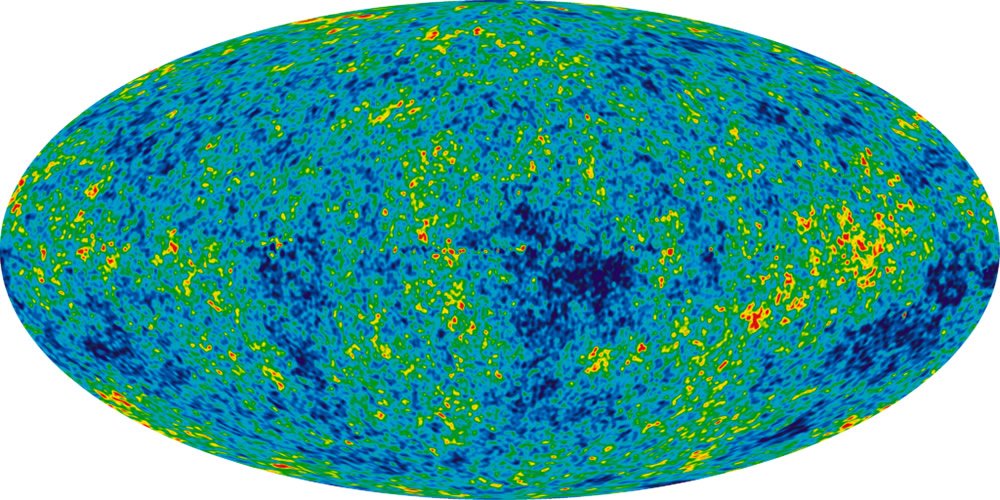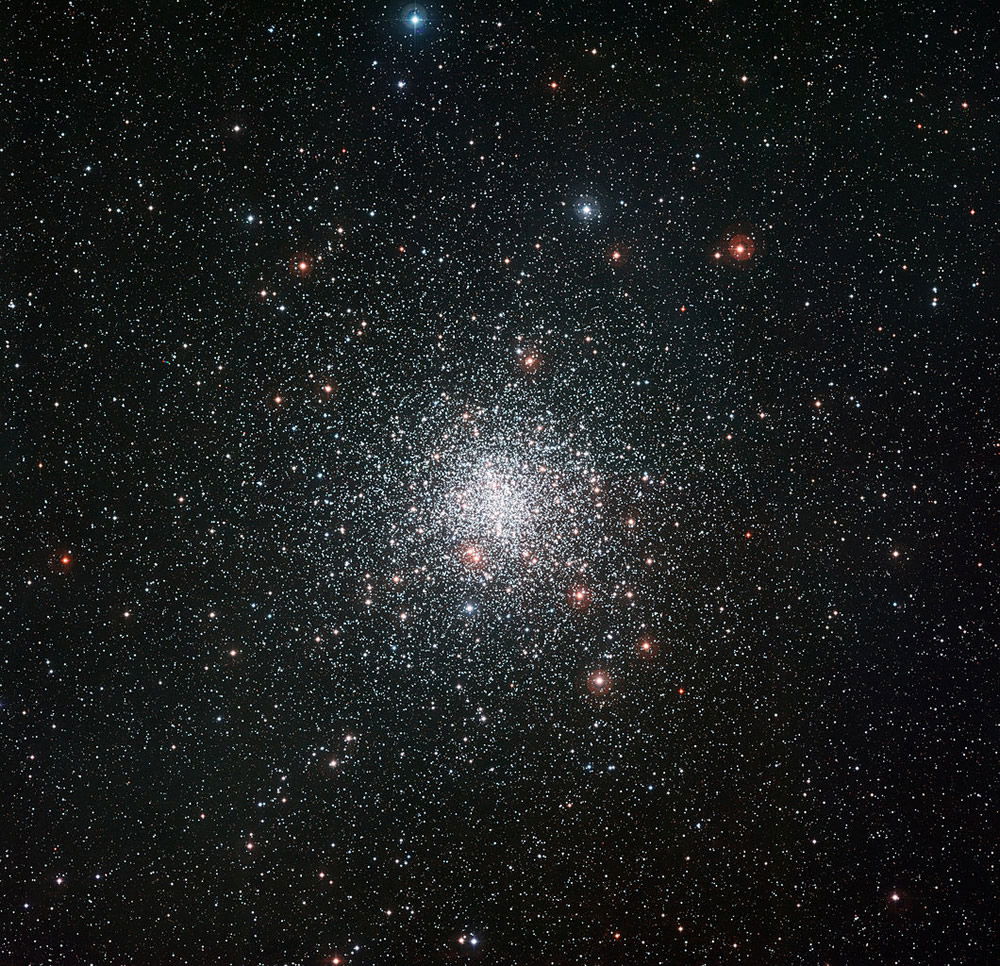
How Do We Know the Age of the Universe?
A recent Forbes article, written by the astrophysicist Ethan Siegel, had the provocative title, “How Do We Know the Age of the Universe?” Though there is nothing new in this article, it is a good lay-level discussion of the current understanding of the age of the universe within the big bang model. Since Forbes is a well-read source, many people who regularly visit the Answers in Genesis website may wonder what the biblical response is; this is a good opportunity to offer some thoughts.
Siegel began his piece with the comment that, in a question of this nature, it would be best to have “an incredible number of independent lines of evidence, all converging to the same answer. But in reality, there are only two good ones, and one is better than the other.” This is a refreshingly candid observation; all too often these sorts of articles have far more certainty than is warranted.
Methods for Measuring the Age of the Universe
The better method that Siegel discussed is the combination of several different kinds of data, such as the current measurement of the expansion rate of the universe, changes in the rate of expansion from type Ia supernovae, clumping of matter on large scales, and fluctuations in the cosmic microwave background. When these data are combined with a model of the big bang, cosmologists can compute an age for the universe. It is important to note that the computed age for the universe depends upon the particular version of the big bang model that is assumed: if the model changes, the age changes. The current estimated age is 13.81 billion years, with an uncertainty of 120 million years. One hundred twenty million years may sound like a lot of time, but when compared with 13.81 billion years, it is within one percent. In commenting on this precision, Siegel wrote, “We have a number of different data sets that point to this conclusion, but in reality, it’s all the same method.” Again, this is unusually honest because many others attempt to expand this to be several different methods.

Cosmic Microwave Background. Image by NASA/WMAP Science Team, via Wikimedia Commons.
Siegel discusses using the ages of globular star clusters as a second, less accurate method of measuring the age of the universe. A globular cluster is a centrally condensed, radially symmetric, gravitationally bound group of stars that contains between 50,000 and a half-million stars. Our galaxy, the Milky Way, contains about 200 globular clusters that orbit in the halo, a spherically symmetrical region around the galaxy. Globular clusters are thought to consist of some of the oldest stars in the galaxy, dating back to the beginning of the Milky Way, shortly after the big bang. The age estimates of globular clusters come from comparing observations of their stars (what astronomers call color-magnitude diagrams) to the predicted behavior of stars over time. Stars are lit by thermonuclear reactions deep within them. As stars age, their interior composition changes. These changes in composition alter the structure of stars, bringing about gradual changes in the gross properties of stars, which ought to show up in color-magnitude diagrams. By comparing observed color-magnitude diagrams of globular clusters with calculated changes over time from models of stellar evolution, astronomers expect the best fit between observations and theoretical models to reveal the ages of globular clusters. As with age estimates of the universe within the big bang model, the ages of globular clusters are model dependent. The current estimate of the age of globular clusters is about 13.2 billion years, though there is uncertainty of a billion years or so. Since this age is 600 million years less than the big bang age of 13.81 billion years, this is thought to be good confirmation of the universe’s age.
Issues with the Estimates

Globular star cluster Messier 4. Image by ESO Imaging Survey, via Wikimedia Commons.
This sounds like a neat, tidy package, but is it? The ages involved have changed over the years. It was just a decade ago that the first precise age for the universe was announced using the first method that Siegel described. It was 13.7 billion years, 110 million years less than the current estimate, a difference roughly equal to the error in the currently claimed age. That probably is of no real consequence, but it does illustrate how the estimates change over time. Astronomers and astrophysicists probably will hone some of the data, such as the expansion rate, which in turn will alter the age estimate of the universe. For instance, from the early 1960s until the early 1990s, the age of the universe was estimated to be 16–18 billion years. Notice that the range in this age estimate does not overlap with the current range of age estimate. The gap between the two ranges 2 billion years. Many scientists are convinced that the current age estimate is correct, but there was equal confidence in the older age estimate. Until a little more than two decades ago, the expansion rate of the universe was thought to be much lower than today. This lower expansion rate resulted in an older age. At that time, astronomers generally resisted a higher expansion rate, even though for years a few astronomers had provided evidence for a greater expansion rate.
Why was there such resistance? Astronomers realized that a faster expansion rate would shorten the age of the universe, but astronomers also thought that globular clusters were at least 15 billion years old, if not older. If the universe were expanding much faster than generally thought at the time, then the universe would be younger than globular star clusters, which, of course, makes no sense. Once astronomers finally accepted the faster expansion rate and younger age for the universe, they had to rework their understanding of globular star clusters to improve the fit. Clearly, this adjustment would not have been made if it were not necessitated by the new estimated age of the universe. Perhaps these supposedly independent methods of age determination are not so independent after all.
If the cosmological principle is not true, then one must question whether the big bang model is true.
In his essay, Siegel listed some of the assumed characteristics of the universe upon which the big bang model relies. These assumptions are that the universe is both homogeneous and isotropic (we call this the cosmological principle). Homogeneity is the assumption that matter in the universe is uniformly distributed throughout space and that physical laws are the same everywhere. Isotropy is the assumption that the universe has the same properties in every direction. How well founded are these assumptions? Matter in the universe is very clumpy, but cosmologists generally assume that, at the largest scale in the universe, these clumps smooth out. However, at all scales that we observe, the universe is not smooth. Furthermore, evidence suggests that not only is the universe not homogeneous, it also is not isotropic. If the cosmological principle is not true, then one must question whether the big bang model is true.
Evidence for a Young Earth
Just as there are several independent lines of evidence that, when viewed within the cosmic evolutionary paradigm, suggest a 13.8 billion year old universe, there are also several independent lines of evidence that suggest a young universe.1
But is there another way to determine the age of the universe? The Bible has a wealth of historical information. Genesis 5 and 11 have chronological genealogies that give us an unbroken lineage from the creation to Abraham around 2000 BC. The remaining chapters of Genesis and the other historical books of the Old Testament contain chronological information that allows us to continue the biblical timeline of dates all the way from Abraham to the destruction of Solomon’s Temple by the Babylonians in 586 BC. We must make certain assumptions in constructing the biblical timeline, so different authors get slightly different ages for the world. However, they all agree that the universe is not much more than 6,000 years old. To the Christian, God’s Word is the ultimate, unchanging authority, and as such, we can rely upon it for answers for many things, such as the age of the universe. This is in stark contrast to the changing ideas of man.
Footnotes
- We have detailed a few of these lines of evidence. See Dr. Don DeYoung and Dr. Jason Lisle, “Does Astronomy Confirm a Young Universe?” chapter 19 in The New Answers Book 3 (Green Forest, AR: Master Books, 2009), 187–195, https://answersingenesis.org/astronomy/age-of-the-universe/does-astronomy-confirm-a-young-universe/; “Comet ISON—Evidence of a Young Universe,” Answers in Genesis, https://answersingenesis.org/astronomy/comets/comet-ison-evidence-young-universe/; and Dr. Danny R. Faulkner, “Comet ISON Was Here! (Finis),” Answers in Genesis, December 4, 2013, https://answersingenesis.org/blogs/danny-faulkner/2013/12/04/comet-ison-was-here-finis/.

Answers in Genesis is an apologetics ministry, dedicated to helping Christians defend their faith and proclaim the good news of Jesus Christ.
- Customer Service 800.778.3390
- Available Monday–Friday | 9 AM–5 PM ET
- © 2025 Answers in Genesis


